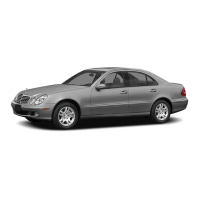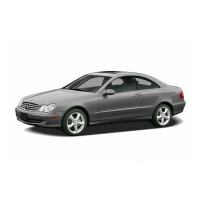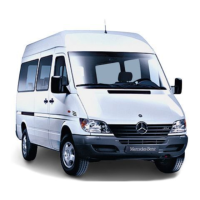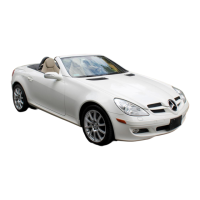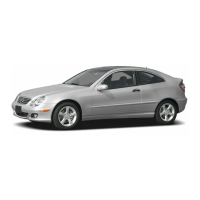231
Operation
Driving instructions
앫 Clean all exterior lamps and check
them for possible damage.
앫 Check for brush or branches caught in
the underbody.
They could increase the possibility of a
fire, as well as cut fuel and/or brake
lines, puncture rubber bellows of the
axles or drive shafts.
앫 After continued operation in mud,
sand, water or other dirty conditions,
clean the brake discs, wheels, brake
pads and check and clean axle joints.
앫 Conduct a brake test.
Control and operation of radio trans-
mitters
COMAND, radio and telephone*
Telephones and two-way radios
Radio transmitters, such as a portable tele-
phone or citizens band unit should only be
used inside the vehicle if they are connect-
ed to an antenna that is installed on the
outside of the vehicle.
Refer to the radio transmitter operation in-
structions regarding use of an external an-
tenna.
Warning! G
Do not forget that your primary responsibili-
ty is to drive the vehicle safely. Only operate
the COMAND, radio or telephone
1
if road,
traffic and weather conditions permit.
Bear in mind that at a speed of just 30 mph
(approximately 50 km/h), your vehicle is
covering a distance of 44 feet
(approximately 14 m) every second.
1
Observe all legal requirements.
Warning! G
Never operate radio transmitters equipped
with a built-in or attached antenna (i.e. with-
out being connected to an external antenna)
from inside the vehicle while the engine is
running. Doing so could lead to a malfunc-
tion of the vehicle’s electronic system, pos-
sibly resulting in an accident and/or
personal injury.

